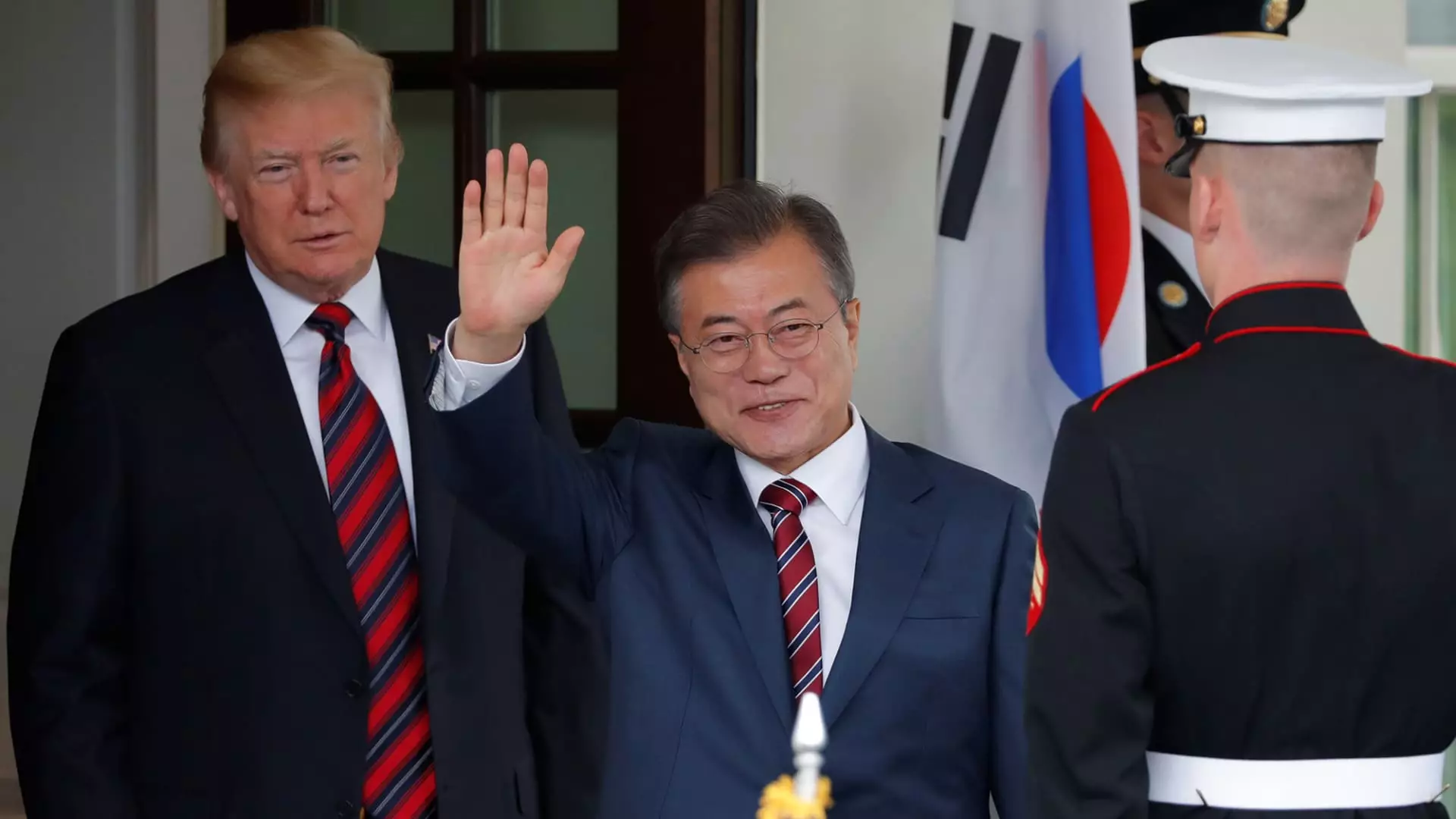The ongoing discussions regarding tariffs on imported vehicles have raised concerns amongst various stakeholders in the automotive industry. As President Trump’s administration considers escalating tariffs on foreign trading partners, particularly targeting South Korea and Japan, the potential fallout is significant. These two nations account for approximately 16.8% of vehicle sales in the U.S., demonstrating their crucial role in the automotive market. With South Korea producing 8.6% and Japan 8.2% of U.S. auto sales according to data from GlobalData, the implications of potential tariffs could not only affect pricing and sales figures but could also alter competitive dynamics in the industry.
The specifics of the tariff structure are noteworthy. Currently, imported vehicles from Japan are subject to a modest 2.5% tariff, which puts companies such as Toyota, Nissan, and Honda at a relative advantage compared to the possible 25% levy on vehicles from Canada and Mexico, as threatened by the Trump administration. On the other hand, automakers like General Motors and South Korea’s Hyundai enjoy tariff-free exports from South Korea, which significantly enhances the competitiveness of these brands in the U.S. market.
Hyundai’s transition to becoming the second-largest exporter of new cars to the U.S. creates a competitive tension with traditional automakers, suggesting that its market strategies are yielding positive results. This rise in South Korean vehicle sales contrasts sharply with the decline in Japanese imports, hinting at changing consumer preferences and effective marketing strategies by manufacturers like Hyundai.
The trend lines also point to a broader shift in the automotive landscape. While Japanese automakers reported approximately 1.31 million vehicles sold in the U.S. last year, South Korean exports surged from under 845,000 vehicles in 2019 to over 1.37 million. This marked increase is emblematic of South Korea’s strategic manufacturing operations and its ability to meet U.S. consumer demands more effectively than some of its competitors.
Furthermore, the existing tariff agreement that South Korea and the U.S. amended in 2018 seems to have little effect on U.S. passenger vehicle exports to South Korea, which have nosedived by around 16%. This underscores inefficiencies in trade negotiations that fail to stimulate bilateral trade in both directions.
The economic implications of increased tariffs are profound. Tariffs function as import taxes that affect the ultimate costs faced by consumers. Automakers typically do not absorb these costs; instead, they inevitably pass them down to consumers, resulting in higher vehicle prices. This phenomenon is particularly concerning in a market already sensitive to pricing. Should tariffs escalate, it is likely that vehicle prices would increase, leading to diminished demand—a scenario that poses risks for automakers reliant on volume sales.
In addition to consumer pricing, the broader automotive market equilibrium could be thrown into disarray. If demand contracts due to increased pricing, manufacturers may be forced to reevaluate their production strategies, potentially leading to job losses or plant closures.
The automotive sector has historically exhibited a remarkable capacity for adjustment. Trade expert Terence Lau notes that while the industry can adapt to new economic circumstances and maintain production aligned with consumer demand, such changes take time. Importantly, decision-makers must act strategically to mitigate any possible repercussions from tariffs.
Ford Motor’s CEO, Jim Farley, has also indicated a desire for a comprehensive tariff policy that would level the competitive playing field. His perspective suggests that selective tariff imposition could skew the market in favor of certain importers, ultimately harming domestic manufacturers.
As the administration evaluates its options, the future regulatory landscape will be critical for all industry players. The White House has laid out plans for potential “reciprocal tariffs,” implying that trade policies might soon become even more complex. The emphasis on equitable tariffs across nations underscored by Farley will be paramount moving forward. How these policies are structured will dictate not only market dynamics but also the overall health of the U.S. automotive industry.
The implications of proposed tariffs on South Korean and Japanese vehicles extend beyond mere pricing. They hold potential consequences for manufacturing investments, consumer behavior, and international trade relations. As the situation unfolds, the automotive industry must remain vigilant and adaptable to thrive amid changing regulatory landscapes and market challenges.

